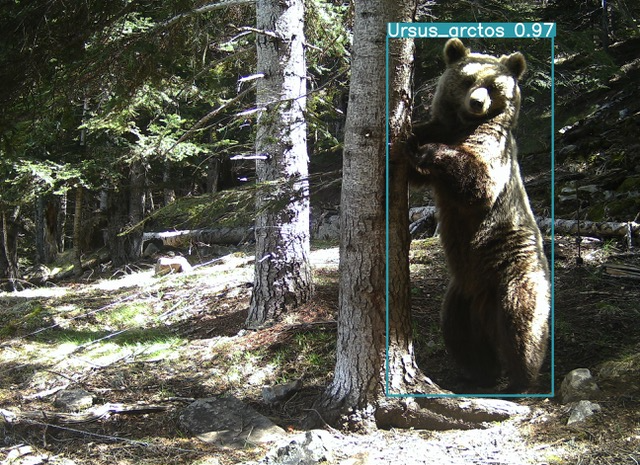PyrVisión is an artificial intelligence model developed by the CTFC and the CVC that automatically detects up to 17 animal species
According to the latest State of Nature 2020 report, vertebrate and invertebrate populations have declined, on average, by 25% in the last 20 years. To carry out good management and thus contribute to protecting and conserving these populations, it is necessary to articulate wildlife monitoring and evaluation systems that make it possible to estimate the status of these populations.
During the last decade, photo-trapping cameras have become a widely used tool, almost indispensable because of the cryptic and skittish nature of some animals, which makes it practically impossible for field technicians to see these animals with the naked eye. A photo-trapping camera can collect between 2,000 and 10,000 images in three months. This large number of images implies a great investment of time for the researchers analyzing the photos. The process of image analysis and fauna classification can take weeks or months, slowing down the work of the research teams. Thus, the resulting conservation or management measures may come too late.
The need to streamline data analysis processes in the field of conservation, especially in the field of photo-trapping cameras, and the new technological capabilities in the field of artificial intelligence (AI) and computer vision have created a great opportunity. Taking advantage of the advances in these technologies, technicians from the Conservation Biology Group of the Forestry Science and Technology Center of Catalonia (CTFC) in collaboration with the Center for Computer Vision (CVC) of the Universitat Autònoma de Barcelona, have created PyrVision, an AI model capable of automatically detecting up to 17 different kinds of animals (including humans) as well as motor vehicles.
PyrVision, which aims to help scientists and conservationists streamline the data analysis process, will enable the implementation of conservation measures in much shorter timeframes. This technology is highly accessible, making it easier to implement these techniques, and the open-source software can be accessed through the following link: http://github.com/ArnauCampanera/PyrVision
This activity is funded through Operation 01.02.01 of Technological Transfer of the Rural Development Program of Catalonia 2014-2022.
Last modified: 11 July 2024










